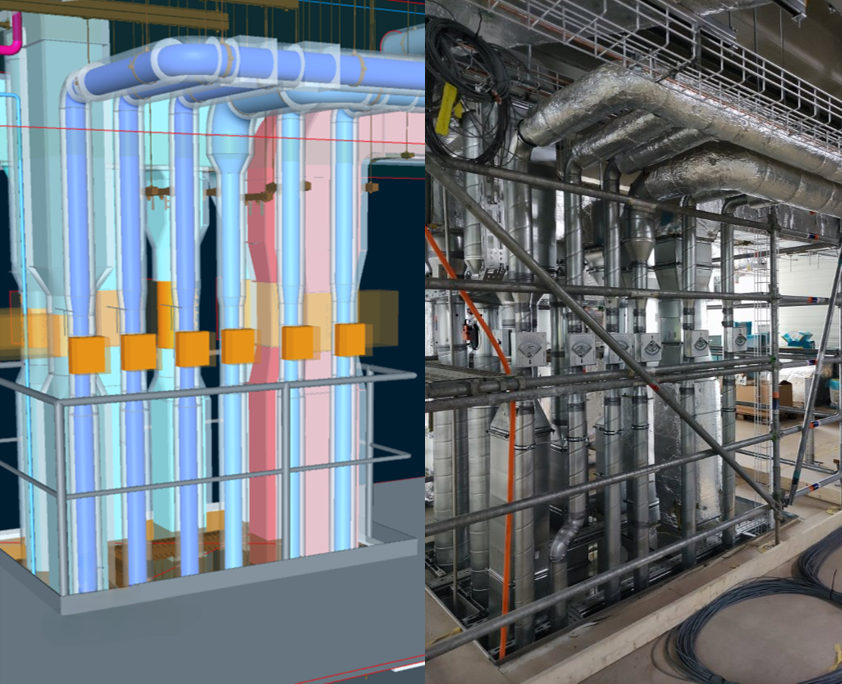
BIM Coordination: The Invisible Pillar of Successful Construction Projects
In the digital age of construction where precision, efficiency, and safety define the success of a project, BIM coordination has become a key tool for aligning various disciplines and ensuring flawless execution.
BIM Coordinator is at the heart of this process , the person responsible for connecting designers, contractors, and investors through digital models that simulate the real-world asset.
What is BIM Coordination?
BIM coordination is the process of synchronizing all technical installations and construction elements within a Building Information Model (BIM). Its primary goal is the early detection of clashes, space optimization, and ensuring that all systems can be installed and maintained without costly rework or delays.
This process relies heavily on software platforms such as Autodesk Construction Cloud (ACC), Navisworks, Revit, and others that enable advanced modeling, analysis, and visualization of potential issues long before they manifest on-site.
Key Advantages of Well-Implemented BIM Coordination
BIM coordination offers numerous benefits to all project stakeholders. Among the most significant are:
1. Early Clash Detection
Using BIM models and clash detection tools, potential conflicts between systems (e.g., HVAC, electrical, sprinkler systems) can be identified and resolved before construction begins, leading to reduced costs and avoiding delays.
2. Space and Access Optimization
In many projects, equipment accessibility for maintenance is often overlooked, which can result in major issues down the line. During early modeling, experienced BIM coordinators especially in pharmaceutical and industrial construction ensure phases that:
- Service zones are reserved
- Accessibility and emergency escape paths are simulated
- Key components remain accessible
- Equipment bring-in routes are analyzed
This approach secures functionality both during execution and throughout the building’s operational lifecycle.
3. Improved Collaboration and Communication
BIM coordination standardizes communication among project teams by centralizing work in a single, up-to-date model. This reduces errors, improves transparency, and accelerates decision-making.
4. More Efficient Construction and Cost Reduction
BIM coordination enables more accurate site preparation, procurement planning, and reduction of material waste. As a result, contractors benefit from:
- Faster execution without disruptions
- Less on-site improvisation
- Lower overall project costs
- Greater potential for prefabrication (accelerating installation work)
- Real-time access to all asset-related data

BIM Coordination in Practice: An Industry Example
One of the challenges BIM coordinators frequently face is inaccessible equipment post-installation. In projects where safety and operational efficiency are critical such as hospitals, pharmaceutical facilities, or data centers, a service missing zone can lead to expensive redesigns.
And what is the best solution? During the modeling phase, families and components (e.g., Revit families) are used to simulate:
- Minimum clearance paths
- Maintenance access
- Service working zones
- Equipment bring-in routes
This methodology not only protects the investment but also enhances safety and long-term functionality.
Digital Twin and Long-Term Sustainability
BIM coordination doesn’t end with the design phase. In combination with the Digital Twin concept, coordinated data enables:
- Precise facility maintenance
- Energy consumption monitoring
- Future renovation planning
Facility management becomes proactive, transparent, and significantly more efficient which is crucial for today’s investors.
BIM Coordination – A Cornerstone of Modern Construction
Ultimately, BIM coordination is not a luxury, it is a necessity. It ensures that all parts of the project “breathe together” from concept and planning, through construction, to day-to-day operations.
It is no longer acceptable to rely on costly, reactive coordination in the field, where installers resolve conflicts through improvisation. Key decisions must be made early, accurately, and digitally aligned.
As a company committed to digital transformation, we continuously invest in the development of BIM processes, staff education, and collaboration with certified partners. In doing so, we build safer, higher-quality, and more sustainable assets today and for the future.




